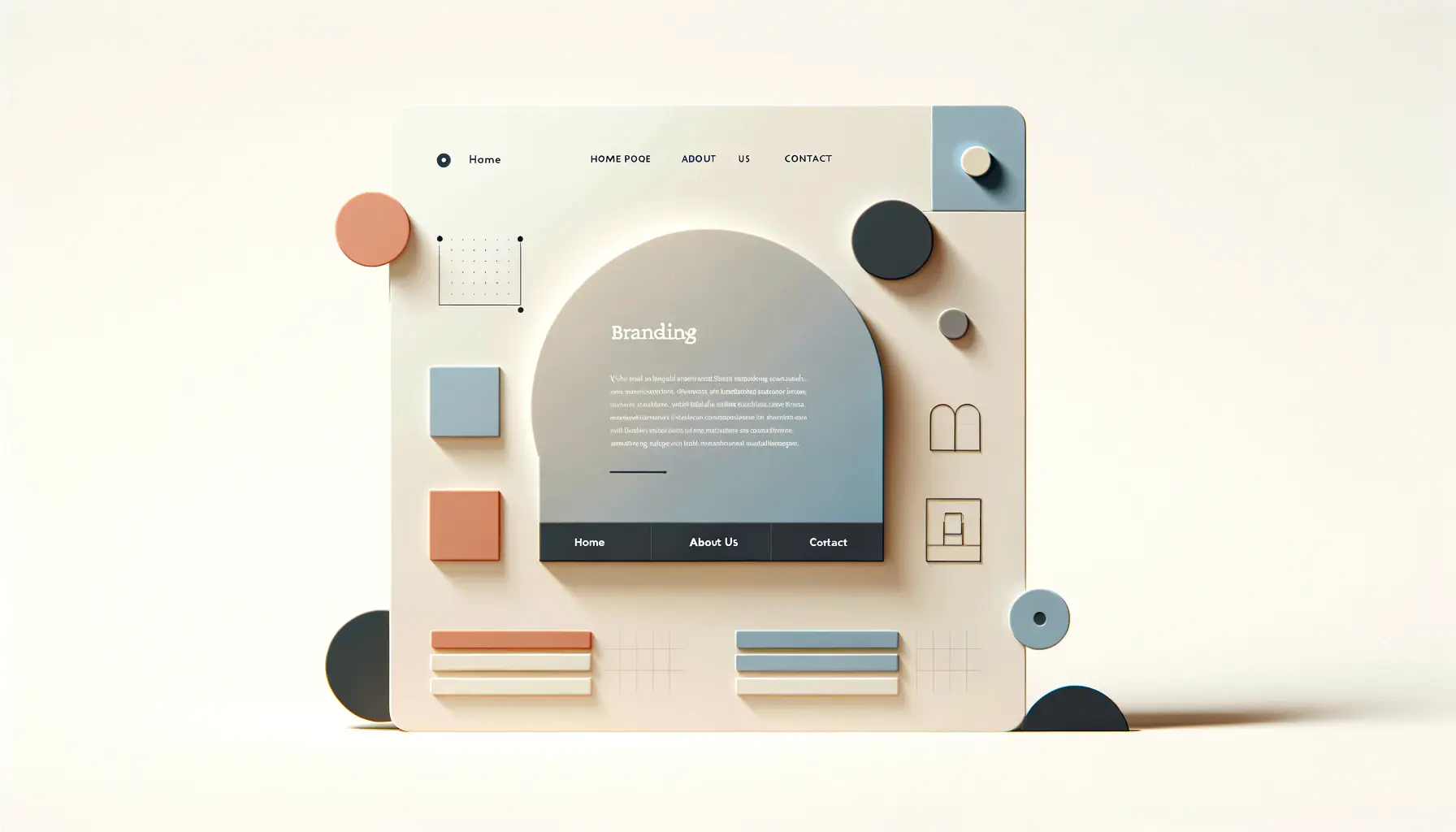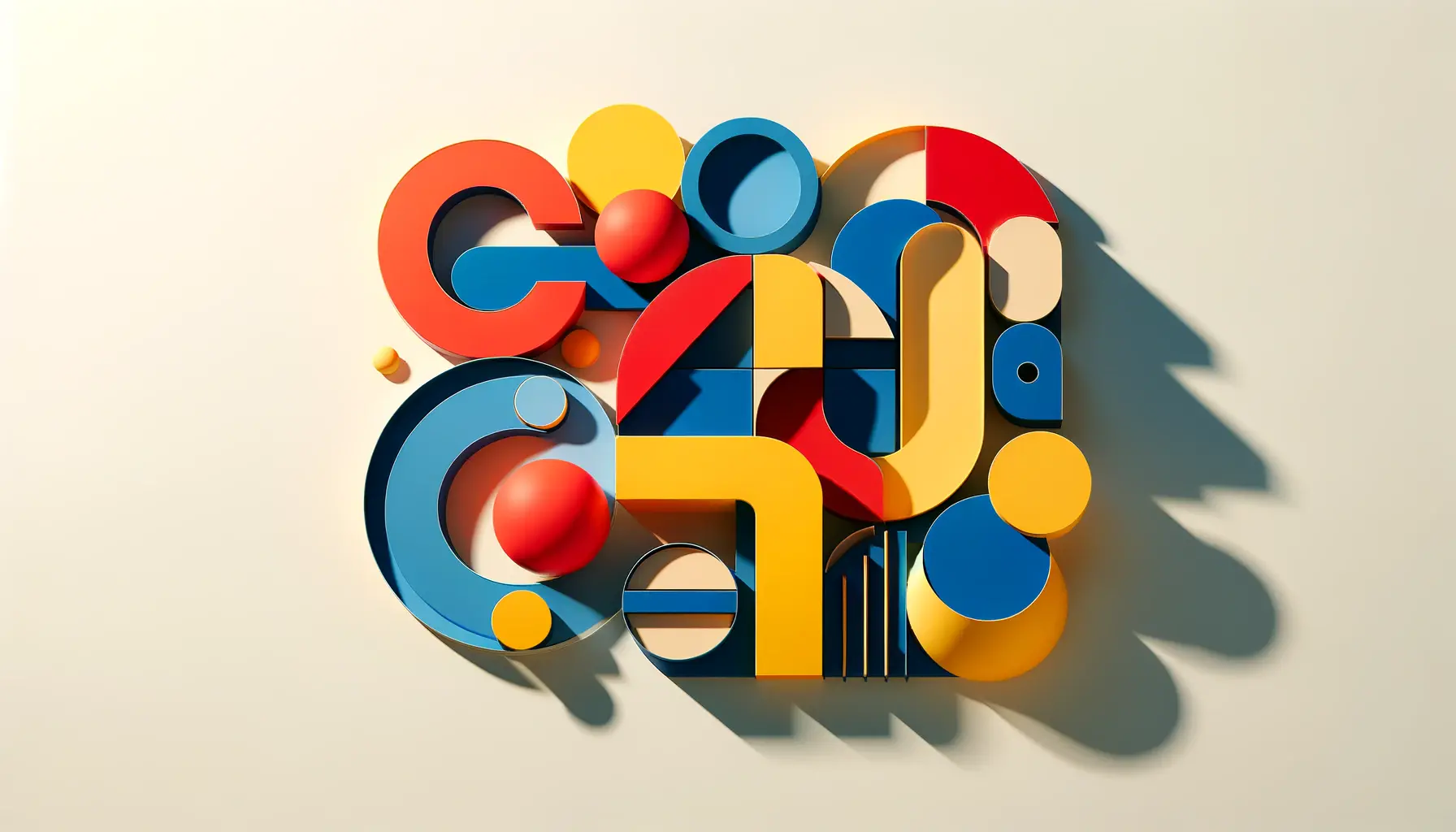Update a brand’s web design is a pivotal step in maintaining relevance in the ever-evolving digital landscape.
It’s a delicate balance between infusing modernity and retaining the essence that customers have come to recognize and trust.
In the digital age, a brand’s online presence is often the first point of interaction with potential customers, making it crucial to ensure that the web design reflects current trends while preserving the brand’s core identity.
This article explores strategies to achieve this balance, ensuring that your brand remains competitive without alienating its existing customer base.
The process of updating a brand’s web design requires a strategic approach that considers not only aesthetic improvements but also the functionality and user experience.
It’s about understanding what your brand stands for and how these values can be translated into a web design that speaks to both new and loyal customers.
With the right approach, it’s possible to rejuvenate your brand’s online presence, making it more engaging and accessible, while still honoring the brand’s heritage and values.
- Understanding the Importance of Brand Identity in Web Design
- Strategies for Updating Web Design Without Losing Brand Identity
- Content Optimization and SEO Considerations
- Leveraging Social Media to Showcase Your Updated Design
- Feedback and Continuous Improvement
- Integrating Marketing and Communication Strategies
- Emphasizing Brand Story and Values
- Conclusion: Mastering the Art of Web Design Update Without Losing Brand Identity
- FAQs: Updating Your Brand’s Web Design Without Losing Identity
Understanding the Importance of Brand Identity in Web Design
Brand identity is the collection of all elements that a company creates to portray the right image to its consumer.
It’s more than just a logo or a color scheme; it’s the heart and soul of your brand, encapsulating your brand’s values, personality, and promise to your customers.
When updating your web design, it’s essential to keep these elements at the forefront to ensure that your brand’s identity shines through every page, button, and user interaction.
Retaining your brand identity in your web design is crucial for maintaining brand recognition and loyalty.
Your website acts as a digital storefront, and for many customers, it’s their primary interaction with your brand.
A well-designed website that aligns with your brand identity can enhance user experience, build trust, and ultimately, convert visitors into loyal customers.
It’s about creating a cohesive and memorable experience that resonates with your audience and sets you apart from competitors.
Assessing Your Current Web Design
Before embarking on a redesign, it’s vital to assess your current web design to identify what elements are working well and what areas need improvement.
This involves looking at your website from both a design and functionality perspective.
Consider how well your current design reflects your brand identity and whether it meets the needs of your target audience.
Analyzing website analytics can provide insights into user behavior, helping to pinpoint areas where your web design may be falling short.
Feedback from customers can also be invaluable during this stage.
They can offer a fresh perspective on your website’s usability and how well it communicates your brand message.
Combining this feedback with a thorough analysis of your website’s performance can guide your redesign process, ensuring that updates enhance the user experience while staying true to your brand identity.
Maintaining a strong brand identity in your web design is not just about aesthetics; it’s about creating a seamless and intuitive user experience that reflects your brand’s values and meets your audience’s needs.
Strategies for Updating Web Design Without Losing Brand Identity
Updating your web design without compromising your brand identity involves a strategic blend of innovation and consistency.
The goal is to refresh your online presence to stay relevant and competitive, while ensuring that your brand’s core values and personality are not lost in the process.
Here are key strategies to achieve this delicate balance:
Integrate Brand Elements Consistently
One of the most critical aspects of maintaining brand identity during a web design update is the consistent integration of brand elements.
These elements include your logo, color scheme, typography, and any other visual components unique to your brand.
Consistency in these elements across all web pages not only strengthens brand recognition but also fosters a sense of familiarity and trust among your audience.
- Logo Placement: Ensure your logo is prominently displayed on every page, ideally in the same location, to reinforce brand recognition.
- Color Scheme: Use your brand’s color palette throughout the website to maintain visual consistency and convey your brand’s personality.
- Typography: Stick to your brand’s fonts, applying them consistently across headings, body text, and buttons to enhance readability and brand alignment.
Enhance User Experience (UX)
Improving the user experience on your website is a crucial part of a web design update.
A user-friendly website not only reflects positively on your brand but also encourages engagement and conversion.
Focus on simplifying navigation, speeding up load times, and making your website mobile-responsive.
These improvements should be made without altering the core aspects of your brand identity that your customers have come to know and trust.
- Streamline navigation to make it intuitive and easy for users to find what they’re looking for.
- Optimize website speed to reduce bounce rates and improve user satisfaction.
- Ensure mobile responsiveness, considering the increasing number of users accessing websites from mobile devices.
Utilize Visual Storytelling
Visual storytelling can be a powerful tool in reinforcing your brand identity while updating your web design.
Use high-quality images, videos, and infographics that align with your brand’s message and values.
This not only makes your website more engaging but also helps convey your brand’s story in a compelling and memorable way.
Choose visuals that reflect the essence of your brand and resonate with your target audience.
- Include images that showcase your products or services in action, reflecting the real-life impact of your brand.
- Use videos to tell your brand’s story or to share testimonials from satisfied customers.
- Incorporate infographics to explain complex information in an easy-to-understand and visually appealing manner.
Remember, updating your web design is an opportunity to enhance how your brand is perceived online without diluting the brand identity that your customers value. By strategically integrating brand elements, focusing on UX, and utilizing visual storytelling, you can achieve a fresh, modern web presence that remains unmistakably yours.
Content Optimization and SEO Considerations
When updating your brand’s web design, it’s crucial not to overlook the importance of content optimization and SEO.
These elements are essential for ensuring that your updated website not only looks good but also performs well in search engine rankings.
Optimizing your content and incorporating SEO best practices can significantly enhance your online visibility, driving more traffic to your site while maintaining your brand’s voice and identity.
Keyword Integration
Incorporating relevant keywords into your website’s content is a fundamental aspect of SEO that helps improve your site’s visibility on search engines.
However, it’s important to do this in a way that feels natural and aligns with your brand’s voice.
Conduct thorough keyword research to identify terms that are not only relevant to your brand and industry but also have a high search volume.
Then, strategically integrate these keywords into your website’s copy, including titles, headings, and meta descriptions, without compromising the readability or quality of your content.
- Use tools like Google Keyword Planner or SEMrush for keyword research.
- Incorporate keywords naturally into your content to avoid keyword stuffing.
- Update your meta titles and descriptions to reflect your new content and include target keywords.
Quality Content Creation
Updating your web design is the perfect opportunity to revisit and refresh your website’s content.
High-quality, engaging content not only helps retain visitors but also reinforces your brand identity.
Focus on creating informative, valuable content that addresses your audience’s needs and interests.
Whether it’s blog posts, case studies, or product descriptions, ensure your content reflects your brand’s tone and values, and is optimized for both users and search engines.
- Review and update existing content to ensure accuracy and relevance.
- Create new content that adds value to your audience and encourages engagement.
- Use a consistent tone of voice that aligns with your brand identity across all content.
Mobile Optimization
With the increasing prevalence of mobile internet usage, ensuring your website is optimized for mobile devices is more important than ever.
A mobile-optimized website not only provides a better user experience but also improves your SEO rankings.
Google prioritizes mobile-friendly websites in its search results, making mobile optimization a critical aspect of your web design update.
Ensure your website’s design is responsive, meaning it automatically adjusts to fit the screen size of any device, from desktops to smartphones.
- Implement a responsive web design that adapts to different screen sizes.
- Optimize images and videos to load quickly on mobile devices.
- Test your website’s mobile usability using tools like Google’s Mobile-Friendly Test.
By focusing on content optimization and SEO, you can enhance your brand’s online presence and ensure that your updated web design not only looks great but also ranks well in search engine results, driving more traffic and engagement to your site.
Leveraging Social Media to Showcase Your Updated Design
As you unveil your brand’s updated web design, social media platforms offer a powerful channel to showcase the changes and engage directly with your audience.
Leveraging social media not only helps in promoting your new website but also in maintaining the connection with your audience, ensuring they remain excited and informed about your brand’s evolution.
Here’s how to effectively use social media to highlight your web design update.
Announce the Launch with a Social Media Campaign
Creating a dedicated social media campaign to announce your updated web design can generate buzz and drive traffic to your site.
Use eye-catching graphics, teasers, and behind-the-scenes content to build anticipation before the launch.
Once the new design is live, share links to your website along with compelling visuals that highlight the new features and improvements.
Encourage your followers to visit your website and provide feedback, fostering a sense of community involvement.
- Plan a countdown to the launch date on your social media channels.
- Share before-and-after screenshots to highlight the changes.
- Use hashtags related to your brand and the web design update to increase visibility.
Engage with Your Audience
Engagement is key to maintaining a strong presence on social media.
Respond to comments, messages, and feedback about your new web design promptly and thoughtfully.
This not only shows that you value your audience’s opinions but also helps in gathering valuable insights that can be used for further improvements.
Hosting live Q&A sessions or webinars can also be a great way to directly engage with your audience, answer their questions, and explain the thought process behind the web design update.
- Monitor social media channels closely for feedback and respond in a timely manner.
- Consider hosting a live session to walk through the new website features.
- Encourage user-generated content by asking followers to share their favorite features of the new design.
Utilize User-Generated Content
User-generated content (UGC) can be a valuable asset in promoting your updated web design.
Encourage your followers to share their own experiences with your brand’s new website, whether it’s through screenshots, testimonials, or reviews.
Sharing this content on your own social media channels not only provides authentic endorsements of your website but also helps in further amplifying your reach.
Create a branded hashtag for users to include in their posts, making it easier to find and share UGC related to your web design update.
- Create a campaign encouraging users to share their experience with the new website.
- Feature user-generated content on your social media channels and website.
- Use a branded hashtag to streamline the collection and sharing of UGC.
Social media is an invaluable tool for promoting your updated web design, engaging with your audience, and enhancing your brand’s online presence. By strategically using social media campaigns, engaging with your audience, and leveraging user-generated content, you can ensure a successful rollout of your new web design and foster deeper connections with your audience.
Feedback and Continuous Improvement
Gathering feedback is a critical step in the process of updating your brand’s web design.
It provides insights into how well the new design is received by your target audience and identifies areas for further improvement.
A successful web design update is not a one-time project but a continuous cycle of feedback, analysis, and refinement.
Here’s how to effectively collect and utilize feedback for continuous improvement of your web design.
Implementing Feedback Mechanisms
Integrating feedback mechanisms into your website can facilitate the collection of valuable insights from users.
Tools such as surveys, feedback forms, and usability tests can help you understand the user experience and identify any issues or areas for enhancement.
Make these tools easily accessible on your website, encouraging visitors to share their thoughts and experiences.
Analyzing this feedback is crucial for making informed decisions about further refinements to your web design.
- Use pop-up surveys or feedback forms to gather immediate reactions from users.
- Conduct usability tests with a segment of your target audience to identify navigational issues or design flaws.
- Monitor website analytics for changes in user behavior, which can indicate areas of the new design that are working well or need improvement.
Engaging with Social Media and Online Communities
Social media platforms and online communities related to your industry can be excellent sources of feedback.
Engage with your audience on these platforms by asking for their opinions on the new web design.
This not only helps in gathering feedback but also strengthens your relationship with your audience by showing that you value their input.
Be open to constructive criticism and use it as an opportunity to make your web design even better.
- Post questions or polls on your social media channels to encourage feedback on specific aspects of the new design.
- Join industry-related forums or online communities and initiate discussions about web design trends and user experience.
- Monitor mentions of your brand on social media to catch unsolicited feedback that can provide genuine insights.
Adopting a Culture of Continuous Improvement
Adopting a culture of continuous improvement within your organization is essential for keeping your web design up-to-date and aligned with user expectations.
Encourage your team to view the website as an evolving platform that can always be enhanced based on user feedback and changing trends.
Regularly review the feedback collected, prioritize the changes that will have the most significant impact, and implement them in a phased manner.
Celebrate successes and learn from any setbacks to foster a positive attitude towards continuous improvement.
- Set up regular review meetings with your web design and development team to discuss feedback and plan updates.
- Create a roadmap for implementing changes based on priority and available resources.
- Share updates and improvements with your audience to show that their feedback is valued and acted upon.
Gathering and acting on feedback is crucial for the success of your web design update. By implementing feedback mechanisms, engaging with your audience, and fostering a culture of continuous improvement, you can ensure that your website remains effective, user-friendly, and true to your brand identity.
Integrating Marketing and Communication Strategies
Updating your brand’s web design is a significant milestone that should be accompanied by a well-thought-out marketing and communication strategy.
This strategy ensures that your audience is aware of the changes and understands the value they bring.
Effective integration of marketing and communication can enhance the visibility of your new web design, drive traffic to your site, and reinforce your brand identity.
Here’s how to align your marketing efforts with your web design update.
Developing a Comprehensive Launch Plan
A successful launch of your updated web design requires careful planning and coordination.
Start by developing a comprehensive launch plan that outlines key messages, target audiences, communication channels, and timelines.
This plan should highlight the improvements made to the web design and how they benefit users.
Utilize a mix of marketing channels such as email marketing, social media, press releases, and content marketing to reach your audience effectively.
- Identify the key benefits of the new web design and craft messages that resonate with your target audience.
- Plan a multi-channel marketing campaign that leverages both digital and traditional media.
- Schedule the launch to coincide with significant events or milestones for your brand to maximize impact.
Aligning Web Content with Marketing Messages
The content on your updated website should reflect and reinforce the marketing messages you are promoting.
Ensure that the language, tone, and visuals on your site are consistent with your marketing materials.
This consistency helps in building a cohesive brand image and enhances the effectiveness of your marketing efforts.
Update your website’s content regularly to keep it fresh and aligned with your ongoing marketing campaigns.
- Review and update website copy to ensure it aligns with your current marketing messages and brand voice.
- Use landing pages to direct users from marketing campaigns to relevant sections of your website.
- Incorporate calls-to-action (CTAs) that guide users towards desired actions, such as signing up for a newsletter or making a purchase.
Leveraging Analytics for Continuous Optimization
Utilizing analytics is crucial for measuring the success of your marketing efforts and the performance of your new web design.
Analyze traffic, engagement, conversion rates, and other relevant metrics to understand how users are interacting with your site.
This data can inform future marketing strategies and web design improvements, ensuring that your efforts are effectively driving your business goals.
- Set up goals in Google Analytics to track conversions and key actions on your website.
- Monitor user behavior through heatmaps and session recordings to identify areas for improvement.
- Adjust your marketing strategies based on analytics insights to optimize performance and ROI.
Assuming that a web design update alone will automatically lead to increased traffic and engagement is a common misconception. Integrating effective marketing and communication strategies is essential for maximizing the impact of your new web design and achieving your business objectives.
Emphasizing Brand Story and Values
In the digital age, where competition is fierce and attention spans are short, emphasizing your brand story and values through your web design can significantly differentiate your brand.
A compelling brand story and clear values resonate with audiences, fostering emotional connections and loyalty.
As you update your web design, it’s crucial to weave your brand story and values into every element, creating a cohesive and engaging online experience that reflects what your brand stands for.
Integrating Brand Storytelling
Brand storytelling is a powerful tool that can bring your brand to life on your website.
It involves crafting a narrative that connects your brand’s past, present, and future with your audience’s experiences and aspirations.
Use your web design update as an opportunity to tell your brand story in a more visually engaging and interactive way.
Incorporate elements such as timelines, videos, and interactive content that invite users to explore your brand’s journey and its impact on customers.
- Highlight key milestones in your brand’s history through an interactive timeline.
- Share customer success stories or testimonials that exemplify your brand’s values in action.
- Use engaging visuals and multimedia to make your brand story more captivating and memorable.
Conveying Brand Values
Your brand values are the principles that guide your business and shape how you interact with customers, employees, and the community.
Clearly conveying these values on your website can strengthen your brand identity and attract like-minded customers.
Ensure that your web design update prominently features your brand values, using both content and visual elements to communicate what you stand for.
This can include dedicated sections, imagery, and messaging that highlight your commitment to quality, innovation, sustainability, or whatever values define your brand.
- Create a dedicated “About Us” or “Our Values” section that clearly articulates your brand values.
- Use imagery and design elements that reflect your values, such as nature-inspired visuals for sustainability.
- Incorporate value-driven messaging across your website, reinforcing your commitment to your principles.
Aligning User Experience with Brand Personality
The overall user experience (UX) of your website should reflect your brand personality, creating a seamless and intuitive interaction that reinforces your brand identity.
Whether your brand is playful and quirky or serious and professional, your web design should convey this personality through its layout, color scheme, typography, and micro-interactions.
A well-aligned UX can enhance brand recognition and loyalty, making your website not just a place to get information, but an extension of your brand experience.
- Choose colors and fonts that match your brand’s personality, creating the right mood and tone.
- Design custom icons and elements that reflect your brand’s unique characteristics.
- Implement micro-interactions, such as hover effects or animations, that align with your brand’s style and add a layer of engagement.
By emphasizing your brand story and values in your web design update, you create a deeper connection with your audience, differentiating your brand in a crowded marketplace. Integrating brand storytelling, conveying brand values, and aligning the user experience with your brand personality are key strategies for building a strong, cohesive online presence that truly represents your brand.
Conclusion: Mastering the Art of Web Design Update Without Losing Brand Identity
Updating your brand’s web design is a journey that requires a delicate balance between embracing modernity and preserving the essence of your brand identity.
It’s an opportunity to enhance your online presence, improve user experience, and stay relevant in the rapidly evolving digital landscape.
However, the challenge lies in doing so without alienating your existing customer base or diluting the core values that define your brand.
Key Takeaways for a Successful Web Design Update
Throughout this article, we’ve explored various strategies to ensure your web design update strengthens rather than undermines your brand identity.
Here are some key takeaways:
- Consistently integrate brand elements across your website to maintain brand recognition and loyalty.
- Focus on enhancing user experience to make your website more engaging and accessible.
- Leverage content optimization and SEO to improve your site’s visibility and performance.
- Use social media to showcase your updated design and engage with your audience.
- Collect feedback for continuous improvement, ensuring your website evolves with your audience’s needs.
- Integrate marketing and communication strategies to promote your new web design effectively.
- Emphasize your brand story and values to deepen connections with your audience.
Embracing Change While Staying True to Your Brand
As you embark on updating your brand’s web design, remember that change is an essential part of growth.
By thoughtfully incorporating new trends and technologies, you can create a website that not only looks fresh and modern but also offers a superior user experience.
However, the true art lies in making these updates while keeping your brand’s identity intact.
Your website should be a reflection of what your brand stands for, resonating with both new and loyal customers.
In conclusion, updating your brand’s web design without losing identity is a multifaceted process that involves careful planning, strategic implementation, and ongoing optimization.
By adhering to the principles outlined in this article, you can ensure that your web design update not only meets the current digital standards but also faithfully represents your brand’s unique identity and values.
Embrace this opportunity to rejuvenate your online presence, secure in the knowledge that your brand identity remains your guiding star.
Quality web design is key for a great website! Check out our service page to partner with an expert web design agency.
FAQs: Updating Your Brand’s Web Design Without Losing Identity
Embarking on a web design update can raise many questions, especially when aiming to preserve your brand’s identity. Here are answers to some frequently asked questions that can guide you through this transformative process.
Start by identifying core elements well-known and appreciated by your audience. These should remain consistent to maintain recognition while updating other aspects to refresh your brand’s look and feel.
Successful website rebranding involves understanding your brand’s current position, defining the desired identity, updating visual and verbal elements, and aligning them with your mission and customer expectations.
Communicate the reasons behind the rebrand clearly, maintain core brand elements that your audience loves, and gradually introduce new changes to ensure your audience stays connected throughout the process.
Expanding your color palette, introducing a new font, incorporating custom illustrations or icons, and utilizing new graphic templates are simple ways to refresh your brand without undergoing a full rebrand.
Modernizing your brand’s identity involves assessing your current identity, defining the desired updates, and carefully integrating new visual elements that complement your brand’s legacy.
Yes, by expanding your color palette, introducing new fonts, or adding custom illustrations, you can effectively change your branding without the need for a full rebrand.
Refreshing your identity without losing its soul requires a deep understanding of your brand strategy, maintaining alignment with your company’s perception, and ensuring your business is perceived as intended by your audience.
Effective ways to refresh visual branding include changing templates, experimenting with layout and text placements, and not being afraid to try new visual elements that align with your brand’s core identity.














